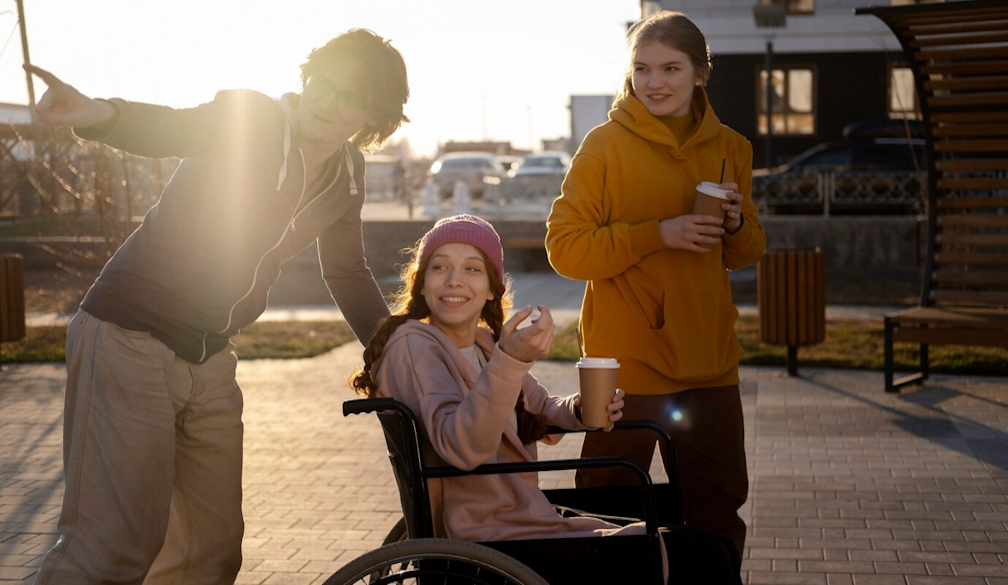
In January 2021, Ireland’s Commission of Investigation into Mother and Baby Homes released its final report, the culmination of a five-year investigation into the conditions and operation of these infamous homes.
It found that between Irish independence in 1922 and 1998, when the last institution closed, 56,000 unmarried mothers and 57,000 children had been housed within these institutions. About nine thousand babies born in them had died. (Roughly one in seven – almost double the mortality rate of the illegitimate babies in the general population.)
Review: Missing Persons, Or My Grandmother’s Secrets – Clair Wills (Allen Lane)
Cultural historian Clair Wills has a family connection with Bessborough Mother and Baby Home in Cork, which by 1934 had the highest recorded infant mortality rate among all of Ireland’s mother and baby homes. “During 1943, three out of every four children born in Bessborough died – a mortality rate of 75%,” reported the BBC.
Her cousin, Mary, who was born there in January 1955, was one of the lucky ones who survived – but throughout her upbringing remained outcast from her entire extended family. After growing up in an orphanage, Mary met her own tragic end as an adult. The failures of past generations were reproduced in her experiences.
Wills, who never met Mary, says she can’t remember when she first found out about her. She didn’t start investigating Mary’s story until she was in her mid-twenties, and a mother herself.

Clair Wills’ mother and grandmother.
Allen Lane
Collective responsibility
In an essay for the London Review of Books, Wills lamented the report’s failure to acknowledge the violence at the heart of the “convoluted bureaucratic machinery” that governed Ireland’s institutional landscape.
She is inspired by the philosopher Hannah Arendt’s contention that citizens should take responsibility for abuses committed by the state, even if they are not individually to blame. Wills advocates for collective political responsibility, which recognises the culpability of both church and state – while also holding the Irish public to account. This includes
the men who fecked off to England rather than pay for their children (one of them was my uncle); the parents who rejected their children and grandchildren (one of them was my grandmother); the people who turned a blind eye ….
This is the jumping-off point for Wills’ memoir, which was three decades in the making.
The relatives she mentioned were her mother’s brother Jackie, who got his girlfriend Lily pregnant, and her maternal grandmother Molly. Molly’s refusal to accept Lily contributed to her incarceration in Bessborough, where she gave birth to Mary.
The 2021 report did nothing to lay the ghosts of the past to rest. More than 500 witnesses gave evidence, but many felt their testimonies had been treated with unjust scepticism.
The commissioners have also been criticised for apportioning blame to individuals and families, rather than holding the state and the church responsible for the abuses committed within the homes’ walls.
These abuses include neglect, forced adoptions and the use of children in medical trials without their mothers’ consent.
Abuses at Ireland’s Mother and Baby Homes included forced adoptions and the use of children in medical trials.
Absent presences
There is a dearth of records relating to the “missing persons” concealed within these institutions. So Wills is unable to offer much detail about Mary and Lily. Instead, they are absent presences, conjured through sheer effort of remembrance and Wills’ determination to make the unsaid said.
Wills has long been outraged at her family’s complicity in such a shameful episode, but she is wary of morally distancing herself from the relatives directly involved. She recognises distance is an illusion, in more ways than one.
Indeed, the difference between distance and proximity is often hard to discern.
 First, “due to a cascading series of late and last children giving birth to late and last children”, Wills’ family stretches back 200 years in only four generations. Thus, though her grandmother was born in the Victorian era, her shame about her illegitimate granddaughter born in the 1950s cannot be blamed on “Victorian values”, as Wills’ mother has previously claimed.
Instead, it can be traced in part to another secret from Molly’s own youth – one that should have theoretically rendered her more sympathetic to the predicament faced by Lily and Jackie.
But this lack of concern illustrates how the social and political conditions of mid-century Ireland – grinding poverty, pervasive social Darwinism, mass emigration and mass institutionalisation – reproduced the family as a system of repressive values, in which reputation counted for more than innocent human lives.
Secondly, the Irish public’s more recent condemnation of the mother and baby homes has generated another layer of moral and temporal obfuscation, which Wills terms the “near-far problem”. Repudiating the mass incarceration of unmarried mothers and their illegitimate offspring makes these practices feel further away. But it is undeniable that “all of this was accepted so recently”.
Wills efficiently dismantles these moral gymnastics, declaring “sometimes the person who feels appalled by the cruelties of the system and the person who believed enough is the same person”.
Thirdly, the “missing persons” are also visible in Irish literature, which is “full of images and stories of the undead and half-alive”, from Bram Stoker’s Dracula to James Joyce’s stories, to Samuel Beckett’s plays. This means Irish culture has long been saturated with encrypted reminders of those lost to the system. These ostensibly distant events have been hiding in plain sight.
This underscores Wills’ bracing clarification of the central dilemma that reckoning with the troubled past entails. The problem is not silence per se; it is that silence is part of storytelling.
As Wills asserts, there is no “neat opposition between storytelling and secret-keeping”: the “secrets were always embedded in the stories. Messages were always being passed.” It isn’t so much that “history has been pressing down on us for far too long,” but that “it’s been expressing itself through us. Reproducing itself, all this time.”
‘We are our own archives’
Born and raised in Coulsdon, south London, Wills spent her childhood summers on the family farm in Ireland, which she viewed at the time as idyllic.
Reappraising those holidays through the lens of gaps and silence, the farmhouse is no longer a cosy reminder of a vanished way of life, but a “ghostly void”.
Similarly, the simplest details yield the largest insights: her grandmother’s decision to marry in a blue suit rather than a white dress; the “weirdly encrypted” meaning of her mother’s oft-repeated story about her own father getting lost on the bog; how the mass emigration of young Irish men to Britain was about more than employment opportunities.
Just as devastating is the revelation that silence was also reproduced in the quiet attempts by Wills’ relatives, and even by Wills herself, to divert subsequent generations from repeating the tragedies of the past.
Jackie’s brothers and sisters did some things differently. Her own mother, for example, unquestioningly accepted Wills’ first child, who was born out of wedlock in 1989. When Wills’ third child passed away less than an hour after his birth in 1996, she insisted on organising “a big Funeral mass, with all the works” because death rituals “presume a life has been lived”.
At the forefront of her mind were the babies back in Ireland who had fallen victim to institutional neglect, and whose “haphazard burial” in unmarked graves on unconsecrated ground “offered incontrovertible physical evidence that some lives mattered more than others in twentieth-century Ireland”. Burdened by the knowledge these babies had not “counted” as persons in the eyes of the Church or state, Wills was determined her “baby would count, whatever his fate”.
As Wills writes, “we are our own archives”. Paying attention to the manner in which we inherit the past sheds light on things “we did not know we knew at all”.
Paying attention to the manner in which we inherit the past is important.
An important counter-narrative
Missing Persons offers an important counternarrative to the unsatisfactory official histories perpetuated by the various inquiries into institutional abuse. The Commission of Investigation is just the latest iteration. Its significance, however, does not lie merely in Wills revealing her personal connection to Bessborough, but in her explicit confrontation with silence.
Wills’ account may be, by her own admission, “full of blindspots, failures of imagination, and vital missing parts”, but it is unsparing in its determination to foreground the gaps in the stories she has unwittingly transmitted.
Although it is brimming with dirty laundry, Wills’ account is also extraordinarily generous. Her bafflement at her relatives’ complicity in the fates of Lily and Mary does not lead her to apportion blame.
Instead, she models the kind of collective responsibility she advanced in her 2021 essay. Those who come after must also shoulder the burdens of reckoning and accountability: “we have inherited the benefits, as well as the harms.”
References^ final report (www.gov.ie)^ reported the BBC (www.bbc.com)^ essay for the London Review of Books (www.lrb.co.uk)^ … (theconversation.com)^ did nothing (www.bbc.com)^ treated with unjust scepticism (www.irishtimes.com)^ Dracula (theconversation.com)^ James Joyce (theconversation.com)^ Samuel Beckett (theconversation.com)
First, “due to a cascading series of late and last children giving birth to late and last children”, Wills’ family stretches back 200 years in only four generations. Thus, though her grandmother was born in the Victorian era, her shame about her illegitimate granddaughter born in the 1950s cannot be blamed on “Victorian values”, as Wills’ mother has previously claimed.
Instead, it can be traced in part to another secret from Molly’s own youth – one that should have theoretically rendered her more sympathetic to the predicament faced by Lily and Jackie.
But this lack of concern illustrates how the social and political conditions of mid-century Ireland – grinding poverty, pervasive social Darwinism, mass emigration and mass institutionalisation – reproduced the family as a system of repressive values, in which reputation counted for more than innocent human lives.
Secondly, the Irish public’s more recent condemnation of the mother and baby homes has generated another layer of moral and temporal obfuscation, which Wills terms the “near-far problem”. Repudiating the mass incarceration of unmarried mothers and their illegitimate offspring makes these practices feel further away. But it is undeniable that “all of this was accepted so recently”.
Wills efficiently dismantles these moral gymnastics, declaring “sometimes the person who feels appalled by the cruelties of the system and the person who believed enough is the same person”.
Thirdly, the “missing persons” are also visible in Irish literature, which is “full of images and stories of the undead and half-alive”, from Bram Stoker’s Dracula to James Joyce’s stories, to Samuel Beckett’s plays. This means Irish culture has long been saturated with encrypted reminders of those lost to the system. These ostensibly distant events have been hiding in plain sight.
This underscores Wills’ bracing clarification of the central dilemma that reckoning with the troubled past entails. The problem is not silence per se; it is that silence is part of storytelling.
As Wills asserts, there is no “neat opposition between storytelling and secret-keeping”: the “secrets were always embedded in the stories. Messages were always being passed.” It isn’t so much that “history has been pressing down on us for far too long,” but that “it’s been expressing itself through us. Reproducing itself, all this time.”
‘We are our own archives’
Born and raised in Coulsdon, south London, Wills spent her childhood summers on the family farm in Ireland, which she viewed at the time as idyllic.
Reappraising those holidays through the lens of gaps and silence, the farmhouse is no longer a cosy reminder of a vanished way of life, but a “ghostly void”.
Similarly, the simplest details yield the largest insights: her grandmother’s decision to marry in a blue suit rather than a white dress; the “weirdly encrypted” meaning of her mother’s oft-repeated story about her own father getting lost on the bog; how the mass emigration of young Irish men to Britain was about more than employment opportunities.
Just as devastating is the revelation that silence was also reproduced in the quiet attempts by Wills’ relatives, and even by Wills herself, to divert subsequent generations from repeating the tragedies of the past.
Jackie’s brothers and sisters did some things differently. Her own mother, for example, unquestioningly accepted Wills’ first child, who was born out of wedlock in 1989. When Wills’ third child passed away less than an hour after his birth in 1996, she insisted on organising “a big Funeral mass, with all the works” because death rituals “presume a life has been lived”.
At the forefront of her mind were the babies back in Ireland who had fallen victim to institutional neglect, and whose “haphazard burial” in unmarked graves on unconsecrated ground “offered incontrovertible physical evidence that some lives mattered more than others in twentieth-century Ireland”. Burdened by the knowledge these babies had not “counted” as persons in the eyes of the Church or state, Wills was determined her “baby would count, whatever his fate”.
As Wills writes, “we are our own archives”. Paying attention to the manner in which we inherit the past sheds light on things “we did not know we knew at all”.
Paying attention to the manner in which we inherit the past is important.
An important counter-narrative
Missing Persons offers an important counternarrative to the unsatisfactory official histories perpetuated by the various inquiries into institutional abuse. The Commission of Investigation is just the latest iteration. Its significance, however, does not lie merely in Wills revealing her personal connection to Bessborough, but in her explicit confrontation with silence.
Wills’ account may be, by her own admission, “full of blindspots, failures of imagination, and vital missing parts”, but it is unsparing in its determination to foreground the gaps in the stories she has unwittingly transmitted.
Although it is brimming with dirty laundry, Wills’ account is also extraordinarily generous. Her bafflement at her relatives’ complicity in the fates of Lily and Mary does not lead her to apportion blame.
Instead, she models the kind of collective responsibility she advanced in her 2021 essay. Those who come after must also shoulder the burdens of reckoning and accountability: “we have inherited the benefits, as well as the harms.”
References^ final report (www.gov.ie)^ reported the BBC (www.bbc.com)^ essay for the London Review of Books (www.lrb.co.uk)^ … (theconversation.com)^ did nothing (www.bbc.com)^ treated with unjust scepticism (www.irishtimes.com)^ Dracula (theconversation.com)^ James Joyce (theconversation.com)^ Samuel Beckett (theconversation.com)Read more















